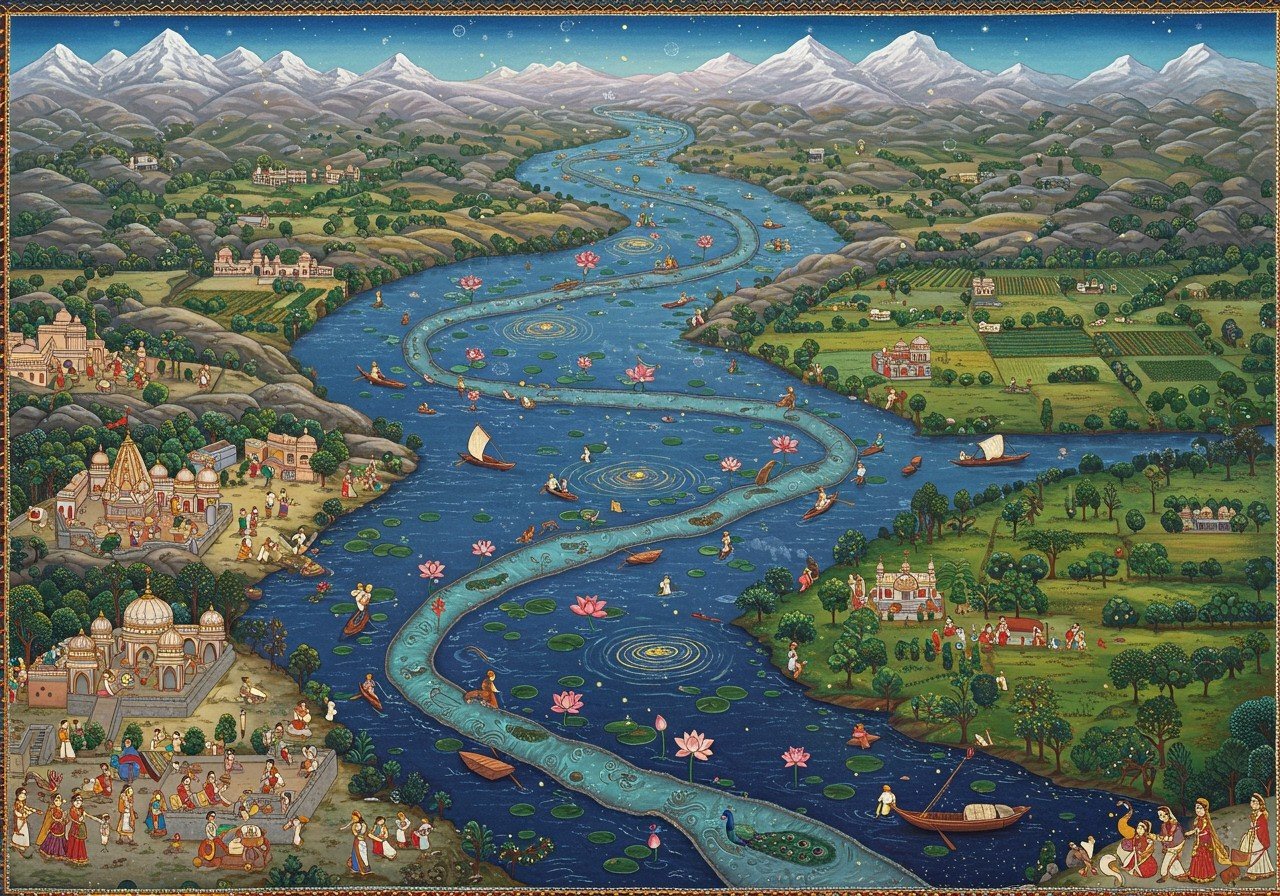
The Indus River, originating near Lake Mansarovar on the Tibetan Plateau, is a cradle of ancient civilizations, flowing through China, India, and Pakistan. This comprehensive guide explores the Indus River’s major tributaries, their historical significance, cultural impact, and geographical importance. We’ll delve into the unique characteristics that make the Indus River system a vital part of South Asian heritage.
The Indus and Its Tributaries: Lifelines of South Asia
The Indus, formed by the confluence of the Sengge Zangbo (Shiquan River) and Gar Tsangpo, stretches approximately 3,180 kilometers, traversing Tibet, China, and entering India in the Ladakh region. It is fed by numerous tributaries, each playing a crucial role in the region’s ecosystem and human settlements.
Major Tributaries:
-
Jhelum River: Originating from Verinag Spring in Jammu & Kashmir, the Jhelum flows through Srinagar before merging with the Chenab River. It has been a vital source of irrigation for agriculture in the region for centuries, supporting a rich diversity of crops and livelihoods.
-
Chenab River: Starting in Himachal Pradesh, the Chenab carves a path through Punjab before ultimately joining the Indus. Its waters are crucial for irrigation, especially in the agricultural heartlands of Punjab, contributing significantly to the region’s food production.
-
Ravi River: Also originating in Himachal Pradesh, the Ravi flows through Punjab and eventually converges with the Chenab River. Its historical significance is tied to the ancient Indus Valley Civilization, and it continues to be a vital water source for the region.
-
Sutlej River: Beginning in Tibet near Lake Mansarovar, the Sutlej traverses Himachal Pradesh and Punjab, finally merging with the Indus. The Sutlej holds immense historical and cultural significance, playing a crucial role in the development of the Indus Valley Civilization and sustaining agriculture in the region.
-
Beas River: The Beas River starts in Himachal Pradesh and joins the Sutlej River in Punjab. Known for its scenic beauty, the Beas is also essential for irrigation and contributes to the rich biodiversity of the region, supporting various flora and fauna.
-
Other Tributaries: Beyond these major rivers, the Indus is also fed by the Gilgit, Gartang, Dras, Shiger, Hunza, and Kabul rivers, further enriching its flow and ecological diversity. The Kabul River, in particular, joins near Attock and plays a significant role in the Indus River system.
These tributaries are essential for agriculture, supporting biodiversity, and have played key roles in the development of ancient civilizations. Cities like Srinagar, Amritsar, and Lahore thrive along these rivers, highlighting their importance in urban development and cultural heritage.
Confluences: Where Rivers Meet and Cultures Intertwine
Indus and Zanskar River Sangam: A Spectacle of Nature
The confluence of the Indus and Zanskar rivers near Leh in Ladakh is a breathtaking natural wonder. The muddy waters of the Indus dramatically meet the clear blue waters of the Zanskar, creating a striking visual contrast. This confluence is a hub for adventure tourism, particularly rafting, and holds deep cultural significance for local communities.
Indus and Sutlej River Confluence: A Historical Meeting Point
The Sutlej River’s confluence with the Indus in Punjab marks a historically significant meeting point. The Sutlej, originating in Tibet, played a vital role in the Indus Valley Civilization. Today, it supports agriculture in the fertile plains of Punjab and holds religious importance in Sikhism and local traditions. Key cities along the Sutlej include Ludhiana and Jalandhar.
The Indus and Ganga: Two Sacred Rivers Shaping a Subcontinent
While the Indus and Ganga rivers do not directly intersect, they are fundamental to the Indian subcontinent’s history, culture, and ecology. Their basins have facilitated trade, cultural exchange, and the development of ancient irrigation systems. Both rivers hold profound religious significance in Hinduism and other faiths.
Preserving the Legacy of the Indus River System
The Indus River and its tributaries face challenges like pollution and climate change. Various initiatives are underway to address these issues and preserve these vital waterways for future generations. Sustainable practices and a deep respect for their historical and cultural value are crucial for ensuring the enduring legacy of the Indus River system.
Learn more about the importance of river Sangams in Hindu culture.
Explore the sacred sites along the Ganges River in Varanasi.
Honoring the Sacred Waters with Poojn.in
The Indus River and its tributaries hold profound spiritual significance. Poojn.in offers a wide selection of puja items to enhance your water worship rituals:
-
Pure Copper Kalash: Ideal for water-based rituals, preserving the sanctity of holy water.
-
Gangajal: Authentic holy water from the Ganges for purification ceremonies.
-
Brass Puja Items: Traditional items like panchpatra and achamani for water offerings.
-
Kumkum and Roli: Essential for tilak and marking sacred water.
Visit Poojn.in to explore our complete collection and honor the sacred rivers with authentic puja items.


